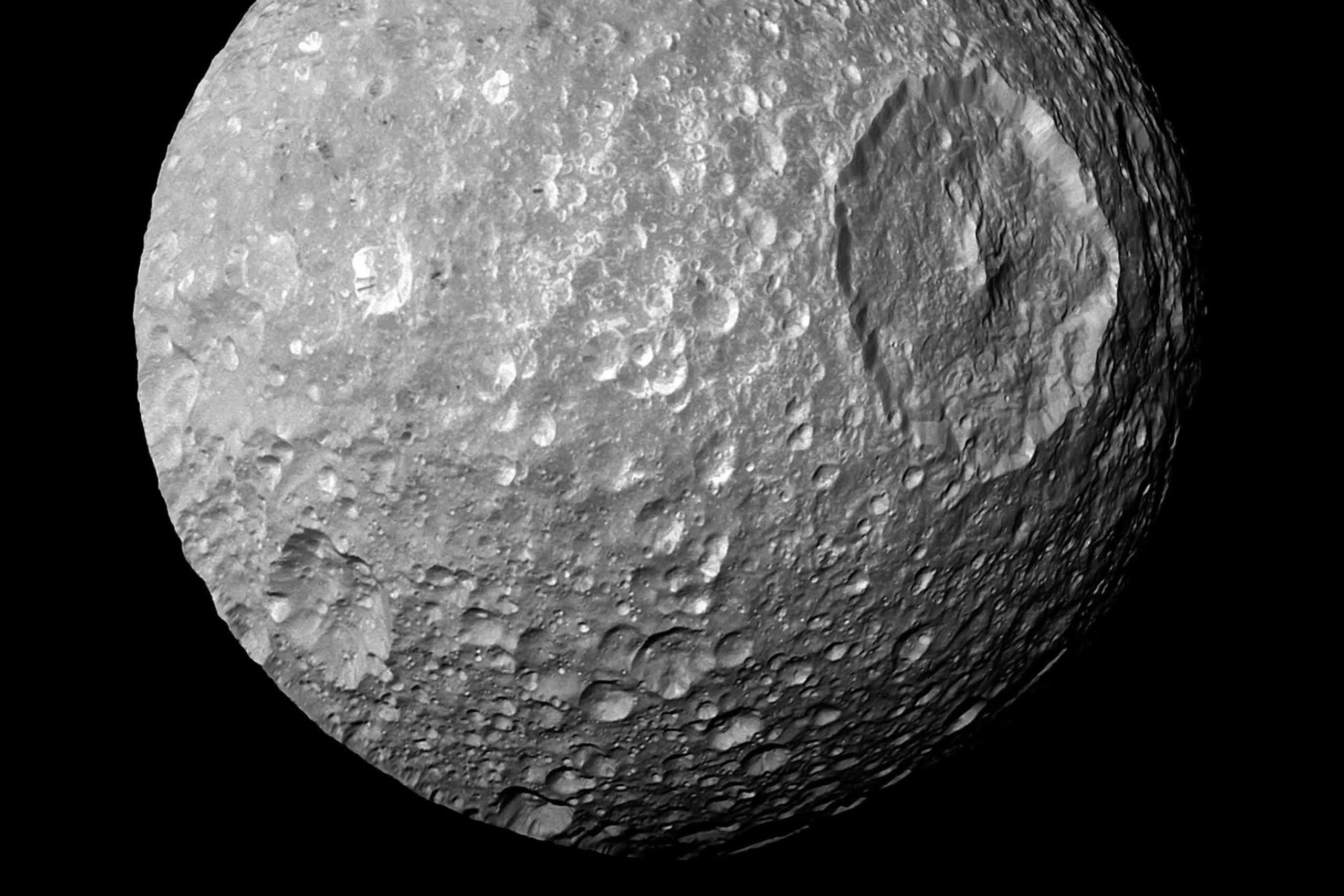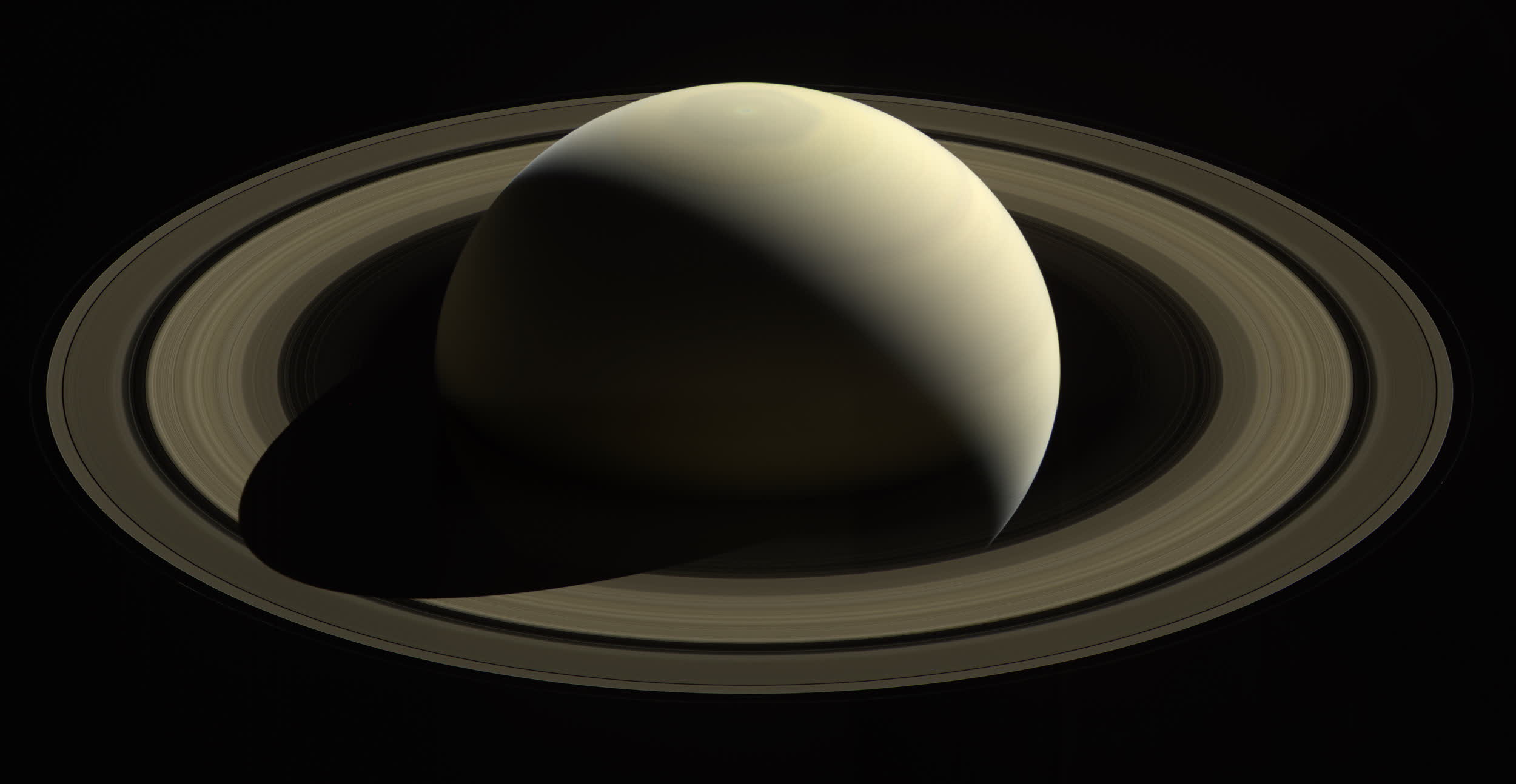Why it matters: Astronomers are gradually discovering that liquid water oceans are more common in the solar system than previously believed. New methods of examining old data have uncovered a surprising feature hiding beneath the surface of one of Saturn's most distinctive moons, which could further the study of the origin of life.

A new study suggests that Saturn's smallest and innermost moon, Mimas, hosts a global ocean of liquid water deep beneath its surface. The discovery adds to a growing club of moons in the solar system with theoretically habitable subglacial oceans.
Astronomers calculated the ocean's presence by using new data science methods to re-examine findings from NASA's Cassini mission, which observed Saturn's moons before intentionally crashing into the gas giant's surface in 2017. Mimas's solid surface shows no signs of liquid underneath, but wobbles in its orbit can only be explained by tidal oscillation between the surface, the ocean, and the rocky core.

The ocean likely lies around 15 miles beneath the icy surface and extends to a roughly 45-mile depth, suggesting that liquid water comprises over half of the moon's total volume. Water is the only substance ever detected on Mimas, indicating that its entire surface is water ice. Jostling between the surface and core is the most probable source of the heat that melts the ocean layer.
Interestingly, Mimas's ocean likely formed relatively recently – within the last 25 million years – and gained much of its depth within the last three million years. The still-developing ocean is a prime candidate for study to better understand the conditions under which life formed on Earth.
Re-examining Cassini data also helped scientists learn more about another Saturn moon, Enceladus, last year. Unlike Mimas, Enceladus regularly spews water from its subglacial ocean, in which astronomers detected the first traces of phosphorous beyond Earth. The discovery confirmed that the moon harbors all six elements known to be essential to life. Scientists also suspect subsurface oceans on Ceres, Europa, Ganymede, Callisto, Titan, Triton, Pluto, and the moons of Uranus.
Mimas has a radius of just 123 miles. Its surface is covered in craters mostly ranging between 12 and 25 miles in diameter. These include the moon's most distinctive feature, an enormous 80-mile-wide impact crater that makes Mimas resemble the Death Star from Star Wars.
Named the Herschel crater after the moon's discoverer, it covers one-third of Mimas's diameter. Its outer walls are 3 miles high, and the mountain in the center is around three and a half miles high. An impact any larger might have broken the moon apart.
https://www.techspot.com/news/101820-saturn-death-star-moon-has-45-mile-deep.html